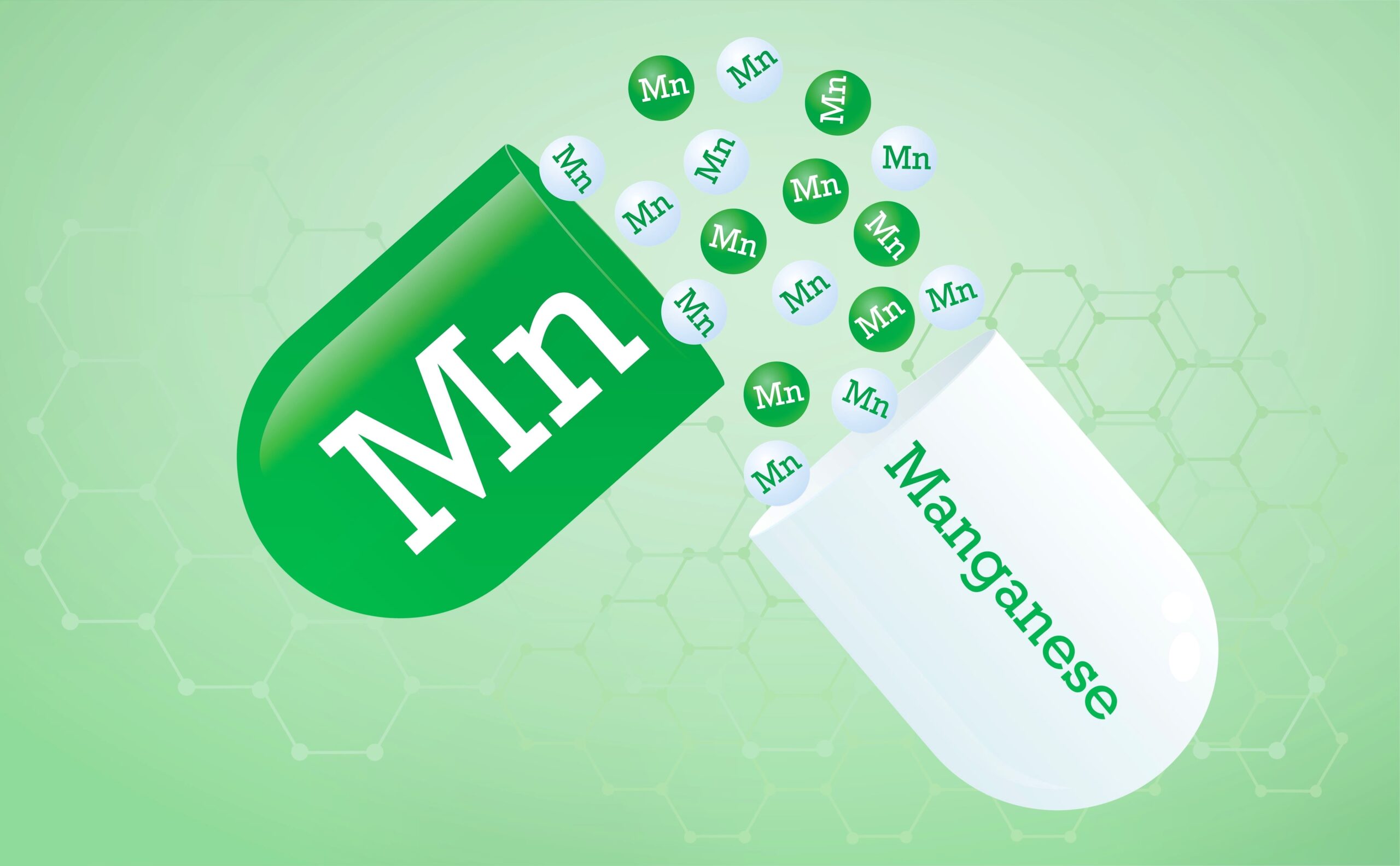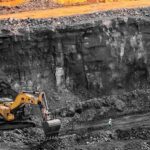
All About Manganese: Uses, and Environmental Safety and Top Producers
Manganese, represented by the atomic symbol “Mn”, with an atomic number of “25” and an atomic mass of “54.9380 g.mol-1”, is an element essential to both industry and life. It is one of the most abundant metals in soil as oxides and hydroxides.
In the body, manganese is present in trace amounts inside the bones, the liver, kidneys and pancreas. Industrially, manganese’ influence is just as remarkable. It strengthens steel, powers the shift towards clean energy and helps improve crop yields.
So, what else is there to know about manganese and its uses? This guide will explain all of it for you.
What is Manganese?
Manganese is a shiny, silvery-gray or pinkish-gray metal found in the Earth’s crust. Though it’s not as well-known as gold or iron, it plays an important role in our daily lives. This metal is essential for making steel stronger and more durable.
Most of the manganese that is mined is used in steel production and the rest is for electric vehicles (EVs) batteries, fertilizers and more. In fact, the demand for manganese in EV batteries is expected to grow by eight times until 2030.
Apart from this, manganese is also important for our health. Our bodies need small amounts of manganese to keep our bones strong, help with metabolism and support brain function. In short, manganese is all around us, making life better in many ways.
How is Manganese Used in Different Industries?
Manganese is used across various industries, which include:
1. Steel and Construction
Most of the world’s manganese supply is used in steelmaking. It acts as a hardener and helps remove impurities like sulfur and oxygen, making steel stronger and more durable. Steel with manganese is widely used in construction, bridges, railroads and pipelines.
Without manganese, producing high-quality steel would become quite challenging. The more the manganese (only up to 7%), the stronger the steel becomes.
2. Battery and Electric Vehicle (EV) industry
Manganese plays a growing role in the battery sector, especially in lithium-ion and other advanced batteries. It is used in the form of electrolytic manganese dioxide (EMD) as the positive electrode in zinc-manganese batteries.
This metal improves energy storage and enhances battery performance, making it ideal for EVs. As demand for EVs grows, so does the need for manganese, as it helps batteries last longer and charge more efficiently.
3. Chemical Industry
Many chemicals rely on manganese in their production processes. It is used to manufacture potassium permanganate, which is essential for water purification and disinfection. Manganese-based chemicals are also present in fertilizers, helping plants grow healthier and stronger.
4. Agriculture and Animal Feed Industry
Manganese helps boost crop yields by activating enzymes needed for photosynthesis. In areas with manganese-deficient soil, fertilizers containing manganese are applied to improve plant health. Moreover, it is included in animal feed to promote growth and reproduction in livestock, supporting sustainable farming practices.
5. Manufacturing and Electronics Industry
Advanced alloys containing manganese-zinc ferrites are used in manufacturing tools, machinery and electronic devices. These ferrites are used in inductors, transformers and coils due to high permeability, high resistivity and low energy loss under high frequencies. Manganese-zinc ferrite cores are present in many products from home appliances and computers to industrial equipment.
6. Glass and Ceramics Industry
Manganese dioxide is valuable in glass and ceramics industries for its color-correcting properties. It removes unwanted tints caused by iron and is also used to create specific colors in decorative glass and ceramic products.
7. Healthcare and Pharmaceuticals
In healthcare, manganese is crucial for bone development, metabolism and brain function. It is included in dietary supplements and medicines to prevent or treat deficiencies. Researchers are also exploring manganese compounds for us in MRI contrast agents and other advanced medical treatments.
8. Mining and Metallurgy
Mining operations use manganese to produce durable equipment that can withstand harsh environments. In metallurgy, manganese alloys enhance the strength and resistance of other metals, helping them endure heavy use and reducing the need for frequent replacements.
In the non-ferrous sector, manganese helps in refining metals like copper, zinc and magnesium. It acts as an oxidizing agency that helps in the purification process by removing unwanted elements.
Where is Manganese Sourced From? Natural and Industrial
Manganese is widely available both naturally in the Earth’s crust and through industrial processes, including:
1. Natural Sources
Manganese occurs naturally in many regions around the world. It is found in minerals such as pyrolusite, manganite and rhodochrosite. Here are some key natural sources:
- Manganese Ore Deposits: These deposits are abundant in countries like South Africa, Australia, Brazil and Ukraine. Among these, South Africa is the largest producer.
- Seafloor Nodules: Manganese nodules contain high concentrations of manganese along with other valuable metals like nickel and cobalt.
- Soil and Water: Trace amounts of manganese are found in soil, rivers, and groundwater.
2. Industrial Sources
To meet the growing demand, manganese is processed and refined through industrial methods. These include:
- Mining and Refining: Manganese ore is mined from open-pit or underground mines and refined through processes like cushing, screening and chemical treatment.
- Electrolytic Manganese Dioxide (EMD): EMD is produced through electrolysis and is widely used as a component in zinc-manganese batteries.
- Industrial By-Products: In some areas, manganese is recovered as a by-product from the mining of other metals like iron and copper.
Which Countries are the Top Producers of Manganese?
Several countries lead the world in mining and processing manganese, contributing significantly to the global supply. Below are the top producers and their impact on the manganese market.
| Country | Mining Regions | Primary Uses | Average Annual Production |
| South Africa | Kalahari Basin | Steel production, battery manufacturing | 7.2 million metric tons |
| Gabon | Moanda | Alloy production, steelmaking | 4.6 million metric tons |
| Australia | Northern Territory, Queensland | Steelmaking, batteries | 3 million metric tons |
| China | Guangxi, Hunan | Steelmaking, EV batteries | 740 thousand metric tons |
| India | Madhya Pradesh, Odisha | Steelmaking, batteries | 720 thousand metric tons |
| Brazil | Para, Minas Gerais | Alloys, steel, batteries | 620 thousand metric tons |
| Ukraine | Nikopol, Ordzhonikidze Basins | Steel production | 320 thousand metric tons |
How is Manganese Mining Affecting the Environment?
Mining manganese is actually crucial for supporting industries like steel production and battery manufacturing. However, it also poses significant environmental challenges that include:
1. Land Degradation and Deforestation
Manganese mining often requires open-pit methods, leading to the removal of topsoil and vegetation. This process can result in habitat loss, soil erosion, and deforestation. In many regions, efforts are being made to restore mining sites through reforestation and land reclamation programs.
2. Water Pollution and Waste Management
Mining activities can release waste materials and chemicals into nearby water bodies contaminating rivers and groundwater. Effluents from manganese processing may contain heavy metals like lead and arsenic, which are harmful to aquatic life and human health.
3. Air Pollution and Greenhouse Gas Emissions
Mining operations generate dust and emissions which increases air pollution. Equipment used in mining emits greenhouse gasses, which can impact air quality and accelerate climate change.
4. Environmental Regulations in Turkey’s Manganese Mining Sector
Turkey is an emerging player in manganese production with over 40.2 thousand metric tons of manganese mined in 2021, with the highest ever being 321.8 thousand metric tons in 2013. It has increased its mining activities ever since, particularly in regions like Eastern Anatolia.
But there have been some concerns surrounding environmental impact as mining in Turkey often takes place in ecologically sensitive areas, and is not regulated properly.
However, there’s nothing to worry about as Turkey is working towards balancing mining with stricter policies including regular environmental assessments, waste management plans and reforestation initiatives.
Conclusion
Manganese is an important metal used in many industries, including steelmaking, EV batteries and agriculture. Its demand is expected to grow as the demand for green energy is increasing. Even though it may not be well-known as other metals like copper or lithium, manganese is becoming more valuable.
Now, there’s an exciting, lesser-known way to benefit from the growing demand for manganese, and that’s tokenization. It allows physical assets like manganese to be represented digitally through blockchain-based tokens so anyone with the right knowledge can invest in it.
Manganese backed by digital assets is a modern investment opportunity as the demand for manganese is only going to increase.
FAQs
Is it safe to use manganese?
Yes, manganese is safe to use in controlled amounts. It is essential for making steel, batteries and even supports health in small doses. However, exposure to very high levels due to inhaling or drinking water contaminated with manganese, especially in mining or industrial settings, can be extremely toxic.
Is manganese good for humans?
Manganese is good for humans in small amounts. It helps with bone development, metabolism, and brain function. However, too much can be harmful so it’s important to get the right balance through food and supplements. Foods like nuts, leafy greens, and whole grains are good sources of manganese.
Sources
- https://www.linkedin.com/pulse/application-manganese-different-industries-linda-cao-6blrc/
- https://www.manganese.org/en/about-manganese
- https://investingnews.com/daily/resource-investing/battery-metals-investing/manganese-investing/top-manganese-producing-countries/
- https://source.benchmarkminerals.com/article/benchmark-launches-manganese-sulphate-market-outlook
- https://www.britannica.com/science/manganese


